The arches of Jama Masjid are similar to the interiors of Spanish Mosque of Hyderabad.
The arches of Jama Masjid are similar to the interiors of Spanish Mosque of Hyderabad.
People generally go by sellers’ claims on the quality of Omani frankincense. However, a Sultan Qaboos University study has found that there is nothing such as ‘high quality’ or ‘low quality’ frankincense – all varieties are equally good and have the same antibacterial properties.
Commonly known as frankincense worldwide and luban in Jebeli and Dhofari Arabic, the resin is an extract of the Boswellia Sacra tree and has various medicinal and aromatherapy applications.
Omani frankincense is commercially available in four grades under the names hoojri, najdi, shathari and shaabi, based on four geographic locations in Dhofar from where the resins are harvested.
“Our study has found that hoojri – the first grade luban – and shaabi – the fourth grade luban – which greatly differed in price, closely resembled each other in essential oil composition, yield and physiochemical characteristics, except colour and texture,” said Dr Hisham Abdul Khader, associate professor of chemistry in the College of Sciences at Sultan Qaboos University.
The market price of the four grades varies considerably according to their colour, clump size and texture. Resin value is determined not only by fragrance but also by colour and clump size, with lighter colours and larger clumps being priced higher.
Hoojri, a first grade resin, which has the lightest colour and a large clump size, is collected from trees in the north of the Samhan mountains in Dhofar, and costs RO32 per kg. Najdi, a second grade resin with a pale yellow colour, is collected from a plateau behind the Dhofar mountains and costs around RO26 per kg.
Shathari, a third grade resin which is darker in colour and collected from the northwest of Dhofar, costs RO12 per kg while shaabi, a fourth grade luban of a darker colour that is collected from valleys, costs RO6 per kg.
Khader said, “As per our study, hoojri, the first grade luban, had the highest oil content of 8.5 per cent whereas the yield of the second and third grade samples – najdi and shathari – were 5.5 and five per cent respectively.
“The oil yield of the fourth grade shaabi was seven per cent, which was higher than that of the second and third grade and closer to that of the first grade, thereby indicating an inconsistency between the oil yield and grade.”
Titled ‘Composition and antibacterial activity of the essential oils of four commercial grades of Omani luban, the oleo gum resin of Boswellia Sacra flueck’, the study also tested frankincense oil for effectiveness of its anti-bacterial properties.
“All four grades were tested for their anti-bacterial properties and showed pronounced activity against a panel of bacteria. The oil killed all the bacteria irrespective of the grade it belonged to, in varying extent. The antibacterial activity of the oils suggests their potential use in food preservation,” Khader said.
“If you go to Salalah, you will notice that the prices are different. The best variety is sold for around RO36 while the lowest grade is sold for RO6. So this study is an eye opener. It will be of use to industries who have so far gone in for the high quality luban. They can now get the same benefits from a less expensive and low quality luban.”
Salim al Saidi, K B Ramesh Kumar, Nallusamy Sivakumar and Salma al Kindy also participated in the study.
source: http://www.muscatdaily.com / MuscatDaily.com / Home / Muscat Daily Staff Writer / December 30th, 2012
The award-winning Indian professor who was found dead in his residence on a university campus in Oman Friday, was a brilliant student, teacher and a scientist, his former colleague said.
M.Kabir, a visiting professor at the Centre for Development Studies here, told IANS that it was only last week that Hisham Abdul-Khader visited here for a day to attend his niece’s wedding.
“It was about 13 years back he left the state government service here and joined at the Sultan Qaboos University (SQU) in Muscat,” Kabir said.
“Two years back he got the UAE award for the best scientist. He was a brilliant student, teacher and a scientist,” he added.
Hisham Abdul-Khader, an associate professor in the chemistry department, was found dead at his residence on the SQU campus Friday night. He was not keeping well, said the former colleague of the scientist.
“We spent some time together as we were former colleagues and friends and he told me that he was having some health issues. We got the sad news Friday night and his wife (a retired professor here) has reached Oman Saturday,” Kabir said.
Abdul-Khader, who was in his late 50s, taught Chemistry at various State-run government colleges here before he went to Oman.
“We are expecting the body to arrive here tomorrow (Monday), or day after,” Kabir said.
The scientist was staying alone at the SQU campus and people saw him last Friday evening when he was out taking a stroll in Muscat. He later also spoke to his wife, reports from Oman said
Abdul-Khader’s grandfather was the legendary Vakkom Moulavi – a social reformer, teacher, Muslim scholar, journalist and a freedom fighter.
source: http://www.newindianexpress.com / The New Indian Express / Home> Nation / by IANS – Thiruvananthapuram / April 27th, 2014
Madurai :
The wide Kazimar Street, which branches off from the busy TPK Road near Periyar Bus stand, is one of the oldest settlements of Muslims in Madurai. Historical legends state that Hazrat Kazi Syed Tajuddin came to Madurai from Oman in the 13th century and established the Kazimar Big Mosque on a land given to him by a Pandya monarch.
Till date, the descendants of Syed Tajuddin, who is believed to be a descendant of Prophet Mohammed, live on the Kazimar Street. They are hereditarily elected as the town kazis.
Syed Ahja Mueenudeen, the current town kazi, said that the Kazimar Big Mosque, which was constructed by Tajuddin as a thatched structure initially, was the first place of worship for Muslims in Madurai. The street has had Muslims settlement for over 700 years, he said. Thus, Islam arrived in Madurai even before Malik Kafur’s invasion of Madurai in the 14th century.
History professor R Venkataraman opines King Maravarman Sundarapandian might have been the contemporary of Tajuddin. Even before the advent of Islam, Arabs maintained trade links with South India, especially for the pearls Madurai Pandya Kingdom was famous for. “Sufis, Muslim saints, started coming to Tamil Nadu by 900 AD. The entry of Islam to the region was peaceful as Sufis conceived God as love,” he said.
The short-lived Madurai Sultanate and Islamic influence did have their impact on the city, especially on warfare and town planning. “Muslim rulers introduced arch construction they learnt from the Romans. It changed the style of architecture here in a significant way,” Venkataraman remarked.
The Big Mosque, which is an architectural attraction, accommodates Madurai Maqbara which is the dargah of sufi saints Hazrat Meer Ahamad Ibrahim, Hazrat Meer Amjad Ibrahim and Hazrat Syed Abdus Salaam Ibrahim Rahmatullahi Alaihim.
Syed Ali Hussaini, the renowned Chennai-based stunt artist, is originally from Kazimar Street. Recalling the legend of Tajuddin, he said: “It is believed that Tajuddin came from Arabia to Kerala and reached Madurai where he established a mosque. He became popular for divine healing powers. The Pandya king was irked with his fame, but Tajuddin cured the king himself when he suffered from a stomach ailment. The king gave away a land for mosque in gratitude,” he said. “Even today Tajuddin’s descendents, numbering more than 2,000, are annually given a customary nominal share of the income from the waqf lands originally donated by the king,” he added.
Till the 1980s, the residents of the street were engaged in rearing horses, rams, cocks and pigeons. “People were crazy about horses and many raised them. Rekla or bull cart race and pigeon racing were popular when I grew up in the area in the 1960s,” Hussaini recalled.
However, the face of the area has changed since then with many moving out for education and jobs, he said.
source: http://www.timesofindia.indiatimes.com / The Times of India / Home> City> Madurai / by J. Arockiaraj, TNN / April 27th, 2014
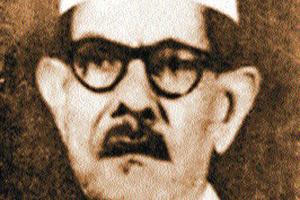
He played cricket and football for St Stephen’s Delhi with distinction. He did his masters in English as well as Arabic and he topped Punjab University in Persian. And if you are to name a saviour of the cave art of Ajanta and Ellora it is him: Ghulam Yazdani, a Padma Bhushan awardee as well as a recipient of OBE (Order of British Empire).
As the Archaeology Department of Andhra Pradesh marks its 100 years the coming Friday, it is time to remember the man who created the department out of nothing.
If Hyderabad has a vestige of its heritage left, it is thanks to him. Deputed to Hyderabad as a Superintendent in 1914, he brought with him his expertise, energy and accountability. Not for him the claptrap of archaeology department doing the job of cataloguing and executing conservation work, Yazdani was a hands on man who got a road laid between Hyderabad and Bidar to protect the Bahamani heritage of Bidar and also between Toli Masjid and Golconda.
A man of sharp wit, he dismisses the decorative motifs of Toli Masjid as: “The impression made by such buildings overloaded with decorations is like the impression left by the ostentatious and lavish display of personal adornment, generally favoured by lowly persons suddenly become rich.”
For the restoration of the Ellora cave art, he tried to get Luigi Cavenaghi, the man linked to restoration of Leonardo’s Last Supper, to work on the paintings. Unfortunately, he could get only Lorenzo Cecconi, who applied shellac on the paintings, ruining them further. Ghulam Yazdani published a series of photographs and reproductions of the cave art with his explanations.
And by the way, Ghulam Yazdani’s salary was ` 560 per month. And just recently, the Archeology Department found it fit to name its museum after YS Rajasekhara Reddy!
source: http://www.timesofindia.indiatimes.com / The Times of India / Home> Life & Style> People / by Serish Nanisetti, TNN / April 21st, 2014
She broke the glass ceiling many a times, from being the first woman to enter any Class-I civil service to becoming the first IRS officer to be appointed a UPSC member and to being the only woman to have worked in the Central Narcotics Department.
After donning multiple hats during her long career, it was another proud moment for Parveen Talha, when she was conferred the Padma Shri award on Saturday for her contribution to the Civil Services.
But the road to success wasn’t that easy for Talha and the biggest hurdle was to overcome the anti-women mindset of her bosses at the initial stages of her career.
“It is indeed a proud moment for me but I am grateful to my bosses too. Though I had to initially deal with their anti-women mindset when I joined services 45 years ago, after a few years I was able to prove that I could handle the tricky jobs as efficiently as my male colleagues,” Talha told PTI.
70-year-old Talha joined Indian Revenue Service (Customs and Central Excise) in 1969 where she worked for 35 years and was then picked up as a member of the Union Public Service Commission (UPSC) in 2004.
“Once my bosses began to trust in my capabilities, I started getting challenging assignments including posting as Deputy Narcotics Commissioner in Uttar Pradesh,” she said.
“There was a large-scale leakage of opium going on in UP then. While I tried my best to play a stringent officer dealing with certain illegal channels, poppy cultivators were surprised too because they had never seen a woman at that level,” she added.
By halting for days in the cultivation areas and delving deep into all processes of poppy cultivation from sowing to lancing and harvesting, she gathered foolproof intelligence which was put to good use by her hand-picked preventive parties.
During her posting in UP and Bihar in 1990s, she attached illegally acquired property worth millions of rupees belonging to smugglers and drug traffickers at the risk of her life.
While she was posted as Director General Training in 2002, Talha provided strategic vision to the Department of Customs and Central Excise in evolving comprehensive packages of programmers for technical capacity building of all cadres and service providers.
Talha, who was honoured with the President Award for “Specially distinguished record of service” in 2000, also has a penchant for writing.
She has written ‘Fida-e-Lucknow’, a collection of 22 short stories, besides writing the dialogues for the serial ‘Husn-e-Jana’ directed by Muzaffar Ali.
“I find there are stories in every nook and corner that are waiting to be told. So I will pursue my passion for writing now that I am a retired person,” she said.
source: http://www.newindianexpress.com / The New Indian Express / Home> Nation / by PTI – New Delhi / April 27th, 2014
Hyderabad:
Insight International School, Hyderabad has bagged three prestigious awards, International School Award by British Council, School Brilliance Award by Bangalore-based IBCI, and Eduranet Intellectual Olympiad.
A graduation and awards celebration ceremony was organized at Hotel NKM Grand in Banjara Hills, Hyderabad on April 18 to felicitate students who secured state ranks in the Eduranet competition.
In Eduranet 9th Intellectual Olympiad 2013-14, Insighters secured state ranks in categories such as Advanced Mathematics Skills, and Science and Research Skills. They bagged two Gold, three Silver and two Bronze awards in the competition.
Fourth class student Abdul Rahman and fifth class student Sidhrah Quadri Syeda won gold medals, while Afifa Hasnath of sixth standard, Syed Raaid Azzam Husaini of third standard and MD Abdul Qayyum of fifth standard won silver medals.
Speaking at the event as chief guest, Mir Ayub Ali Khan, Editor – Special Affairs, Times of India, congratulated all students and the staff members for their hard work and achievements.
Mr. Khan said: “Education is aimed at making us better human being and also a good Muslim. Education is also aimed at giving us relevant skills which are required for a gainful living.”
He remarked about two noted personalities of the Muslim community – Shah Faisal Award winning economist Nejatullah Siddiqui, and Mr. Zainul Abedeen. Mr. Siddiqui studied in madrasa and also at university level, hence a good inspiration for students, he said.
Insight International School principal Syeda Khadeja expressed joy at the achievements of her school and students. She said it reflects hard work of both the students and staff members.
“In Insight, we try to nurture curiosity among students. We are following a task-oriented curriculum for the benefit of the students. And we are evolving into a learning oriented school,” she added.
source: http://www.twocircles.net / TwoCircles.net / Home / by SM Fasiullah / April 20th, 2014
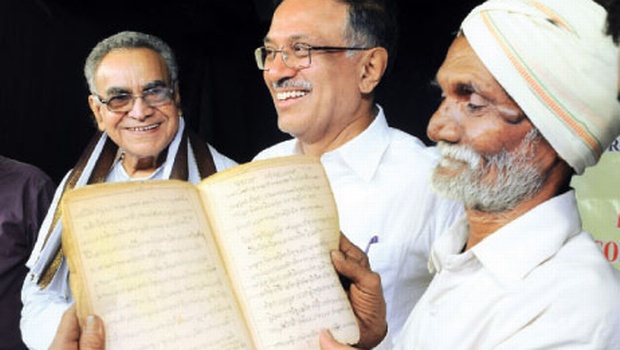
Contrary to what everybody believes as established fact that first freedom struggle in India took place in 1857, a Gondi king with the help of Muslims fought against the British in 1730 and even sent a minister to bring army from Afghanistan.
“Britishers hanged about 300 people for revolting, all this we got to know after reading Gunjala Gondi manuscripts,’’ said V Krishna, professor, Centre for Dalit and Adivasi Studies and Translation, University of Hyderabad (UoH) on Friday at the recitation programme of Gunjala Gondi Script organised on the occasion of World Heritage Day at Potti Sriramulu Telugu University.
He said when manuscripts written in Gondi script were found in Gunjala village, Adilabad district, only four people were left who were able to read the script. “With the intention of preserving the script for posterity, we are going to document the script in audio and video format,” said Krishna.
At the programme, Kotnak Jangu, one of the few who can read the script recited a few phrases from the manuscripts. “I have written my biography in the script and teaching it to youngsters of the village,” said Kotnak.
With a very few people left who can read the script, efforts are being made to teach it to the current generation. It will be taught at 15 schools in Adilabad district, said Jayadhir Tirumal Rao, visiting professor at CDAST who has been working on revival of the script for the past couple of years adding that Integrated Tribal Development Agency (ITDA) is providing funds for research on the script and came forward to establish a research centre for the script.
Appreciating the efforts of the centre in preserving the script, Ramakrishna Ramaswamy, vice chancellor, UoH said that though scripts were excavated at Mohenjo-daro, no body was equipped to read and understand them. “Now with this work of the professors, Gondi script can be integrated with its culture and sounds of the language,” said Ramaswamy. “In the future, we will teach the script to Koya, Khond, Andh tribes also. We request the government to introduce the script in all the scheduled areas,” appealed Tirumal Rao.
source: http://www.newindianexpress.com / The New Indian Express / Home> Cities> Hyderabad / by Express News Service – Hyderabad / April 19th, 2014
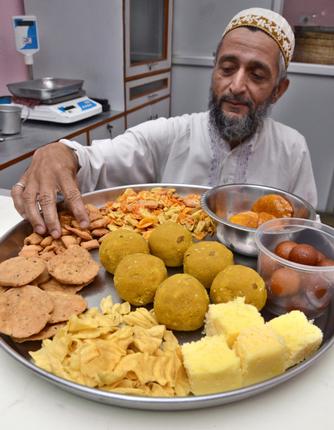
Evening Namaz has just ended. Men in topis and flowing white kurtas emerge from the mosque. Women in colourful gowns zip through the lanes on their two wheelers. The smell of hot khakras wafts from the nearby sweet shop. Children returning from their evening Arabic and Quran classes, buy savouries from there and run home. The conversation one overhears in a language that sounds like a mix of Urdu, Gujarati and Persian. It is called Lisanud-Dawat. Sound of laughter comes out of a home. The Burhani colony of Coimbatore in Peelamedu wakes up to its night life.
“Many of us have settled here for generations since the time of our great grandfathers,” says Alifiya M Mamoowala who has volunteered to be my guide for the day. “There are around 392 families here. And, we have become a part of this city.”
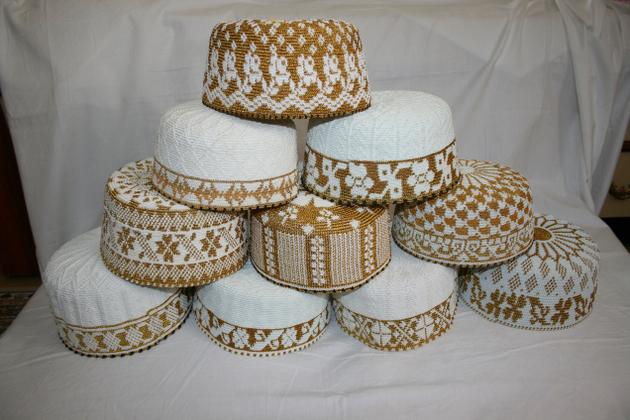
At the same time we hold onto our tradition,” adds Feroz Y Dak, as he leads me to the office of Aamil Saheb, the community’s religious and administrative head.Aamil Saheb hails from Madhya Pradesh and has been holding this office for the last two years. “The community settled in Coimbatore in the early 1930s. We originate from the Khambat district in Gujarat,” he explains. And they believe they must abide by the law of the land where they live, says Aamil. “I am learning Tamil. And, my children go to a Tamil medium school,” he smiles.
Next, I visit the burhani mithai stall, where Saifuddin Bhai Ahmedabadwala fries hot mathris. His shelves are laden with laarvas, a typical burhani laddoo made of besan and stuffed with raisins. His sweet puris drip sugar syrup and I am told they are a must during Shab-e-barat. But Saifuddin’s road to fame is his gulab jamuns, made with khoya. “Even the locals love it,” he says with pride.
I meet another Saifuddin who is head chef at the Community Food Hall. “I have worked across India I have learnt other recipes by working with the local chefs.” “At the Community Food Hall they prepare free dinners for all the houses in the colony. This is one way of making sure that the ladies of the community get some free time to do what they want,” says Feroz.
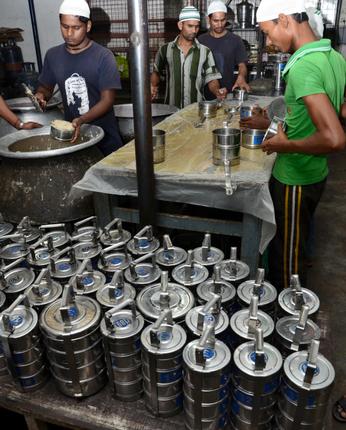
“Looks like it is biryani today,” says Feroz as we sniff appreciatively. Inside, there are huge davaras of chicken biryani. Hundreds of tiffin boxes are neatly arranged on the floor. They will be despatched along with rose lassi and raitha. “Each tiffin box carries a number allocated to a house. So, no one uses the vessel used by the others,” says Feroz. Residents can either collect their tiffin boxes at the hall or get them delivered at their door steps. As dusk falls, lights pop on in the kitchens. At Alifiya’s house, Gulshan Y Mamoowala has whipped up a grand meal. As soon as we enter, she welcomes us with a bowl of crystal sugar. “That’s the bohra custom of welcoming the guests with a sweet note,” says Yunus Bhai Mamoowala, her husband. Gulshan’s lemon yellow skirt and a blouse that she wears with a pretty shawl is called jori. “We wear these inside the house. The burqas are called ridas and are worn outside,” says Alifiya.
“Ridas and joris have become a big style statement,” adds Munira Gheewala, who has dropped in to apply mehendi on Alifiya’s daughter’s hands. “During weddings women wear ridas with zardozis and elaborate embroidery, floral panelling and tatting.” Bohra weddings are grand, says Munira. “We apply mehendi on the entire arm of the bride! Our designs are mostly Arabic motifs, featuring creepers and flowers.”
Conversation ceases as Gulshan brings the huge thaal and places it on a stool. The entire family sits around the thaal. “The whole point is to drive home the message of togetherness,” says Feroz. “This strengthens our bond.”
The first thing I am offered is a pinch of salt! “It opens your taste-buds,” says Gulshan. And in bohra cuisine, desserts come first, says Alifiya. Sodena (sweet rice and badam) and Shir khurma, (something like semiya payasam) kick start the fare. The main course has a shoulder of lamb hot from the tandoor, dal chawal palidu and rotis with khichda (haleem). “The signature dish in a burhani cusine is the simple dal, rice and palidu combination. Palidu is a little like rasam. It is cooked with tuvar dal stock, drum stick and regular spices,” explains Gulshan.
We round off the sumptuous meal with sweet paan. As we sit back on the cushions, Yunus shows me the pictures of their ancestral home at Sidhpur, Gujarat. Magnificent havelis, with a dozen windows, mark the bohra colony. “All the traders used to live here. Each house is built close to each other to create community spirit,” says Yunus. “Our family came to Coimbatore 25 years ago to set up business here. We still go back there once in a year,” says Yunus.
As I bid farewell to the Mamoowala family, Gulshan sprays attar on my hands and tells me to rub it on my clothes. “This is for you to always remember the beautiful memories of the evening you spent with us,” she says.
I smell my hand again and smile as the fragrance recreates in my mind the lanes of Sidhpur and its airy havelis.
source: http://www.thehindu.com / The Hindu / Home> Features> MetroPlus> Melanage / by Parshathy J. Nath / Coimbatore – April 25th, 2014
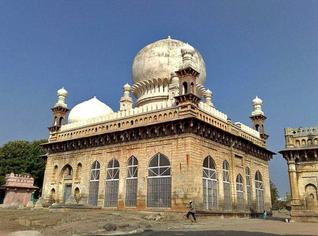
Abdul Wahab tomb, popularly known as Gol Gummaz, located near Osmania College here will soon get a facelift under the Special Tourism package. Financial assistance was given under Archaeological Survey of India (ASI) and Central Tourism package.
The Union Tourism Ministry sanctioned an amount of Rs 4.30 crore for development of Gol Gummaz, Kondareddy Fort, Vijayavanam as landscape and Rupala Sangameswara temple.
Special focus was laid on the 400-year-old tomb for development as tourist spot along with three other places, which will form a tourism circuit. Gol Gummaz has a special place in the history of Kurnool city. The tomb of Abdul Wahab, the military commander of Bijapur army and first Muslim ruler of Kurnool was believed to have been constructed in 1618 after the death of Wahab. After successful invasion of the Kurnool fort, Bijapur Sultan Adil Shah declared Wahab as its chieftain. His successors ruled the fort until another dynasty headed Davud Khan was installed as rulers of Kurnool fort.
The monument with a large dome was constructed in typical Bijapur style of architecture. The Archeological Survey of India (ASI) notified the structure as monument and took all measures to protect its ambience. However, with the latest decision of developing it as a tourist centre, every care was being taken to preserve the originality of the monument, said Krishna Chaitanya of ASI.
source: http://www.thehindu.com / The Hindu / Home> National> Andhra Pradesh / by D. Sreenivasulu / Kurnool – March 19th, 2014